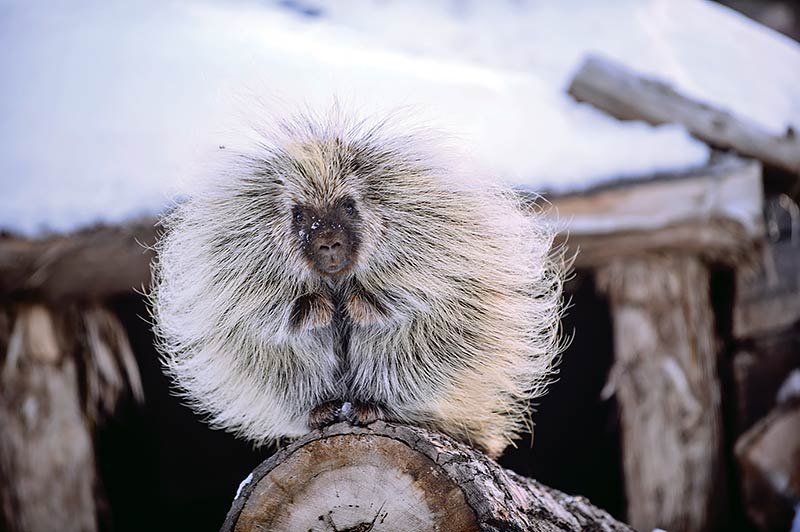
Chants for coyotes; Ballads for bobcats
People, animals turn out for winter stories at the zoo

Navajo Times | Adron Gardner
A Dahsání, porcupine greets visitors during a tour with Anderson Hoskie at the Navajo Nation Zoo in Window Rock on Jan. 25.
WINDOW ROCK

Navajo Times | Adron Gardner
Anderson Hoskie shares songs and Diné history in the hogan at the Navajo Nation Zoo in Window Rock on Jan. 25.
Barb, the resident porcupine at the Navajo Nation Zoo, came out of her shelter and walked up a log to have a better view of the strangers who came to visit her.
Barb listened and looked at the small crowd as medicine man Anderson Hoskie explained how the porcupine is a protection animal and is responsible for taking care of the mountains. Like many other animals, this particular one has some “do’s and don’ts” that should not be ignored.
“The quills, you leave them alone,” warned Hoskie. “You see a lot of Navajos are into the powwow world … They use the quills for different things, but that’s for the different tribe. Navajos, it’s forbidden for you to use it … but its up to you … You’ll be going to a medicine man (if you do).”
“Serenading our Sacred Animals” is part of the Navajo Nation Museum’s cultural programming. The Navajo Nation Zoo and Botanical Park has partnered with the museum before to offer this opportunity to anyone who is interested in the traditional songs and stories of the animals that inhabit the zoo.
“We’ve done this during other seasons like spring and summer and we couldn’t talk about certain things,” said Clarenda Begay, Navajo Nation Zoo curator. “But, now that it’s winter (Anderson) said we can talk about all the stories we want.”
In Navajo tradition, certain stories are reserved for the winter, when bears and snakes and some other dangerous animals are asleep. The reasoning is that animals love stories as much as humans do, and it’s best to tell them during a time of year when there’s no danger of attracting the wrong crowd.
To read the full article, pick up your copy of the Navajo Times at your nearest newsstand Thursday mornings!
Are you a digital subscriber? Read the most recent three weeks of stories by logging in to your online account.








 Highway 264,
Highway 264, I-40, WB @ Winslow
I-40, WB @ Winslow